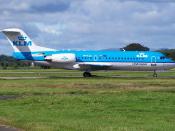Aquatics
1. able to define a wetland
Wetland: A wetland is defined as an area that is seasonally or permanently covered by shallow water, and can be either saltwater or freshwater. The soils are water-saturated, making it ideal for water-tolerant plants to live in. Some wetlands serve as an ecotone (transitional zone) between deeper waters and land systems. Wetlands are found in the peripheries of rivers/streams/lakes/ponds OR open or wooded areas where the water table is close to the surface. Sometimes wetlands may be only ephemeral (temporary), with varying sizes.
2. identify and describe the four major types of wetlands: swamps, marshes, fens, and bogs. 2. identify plants and animals commonly found in wetlands
Marshes: A marsh is usually periodically flooded, though some may be permanently flooded. Therefore, the water level varies drastically, and it may dry out in the summer. Marshes are most productive wetland and has the highest biodiversity of all the habitats in Canada.
-Plant Life: non-woody plants such as cattails, reeds sedges, coarse grass. Marshes that contain open water may have pondweed and duckweed. Shrubs, such as red-osier dogwood may be found in drier peripheral areas.
-Animal Life: Snails, insects, waterfowls, amphibians etc. use marshes as breeding and feeding area.
Swamps: Swamps are periodically flooded by snow melt and rains (dry by end of summer). The water is still or slow flowing during wetter seasons.
-Plant Life: Woody plants, such as white cedar, tamarack, spruce, and maple. Shrubs such as willow, and dogwood.
-Animal Life: Lacks "true" aquatic plants. Combo of aquatic and land animals. Insects, amphibians, waterfowl and mammals can use it provided that it stays wet long enough for development of their young. Song birds nest because of nesting cavities and food (insects, nuts and berries).
Bogs: Are located in the north and are...


